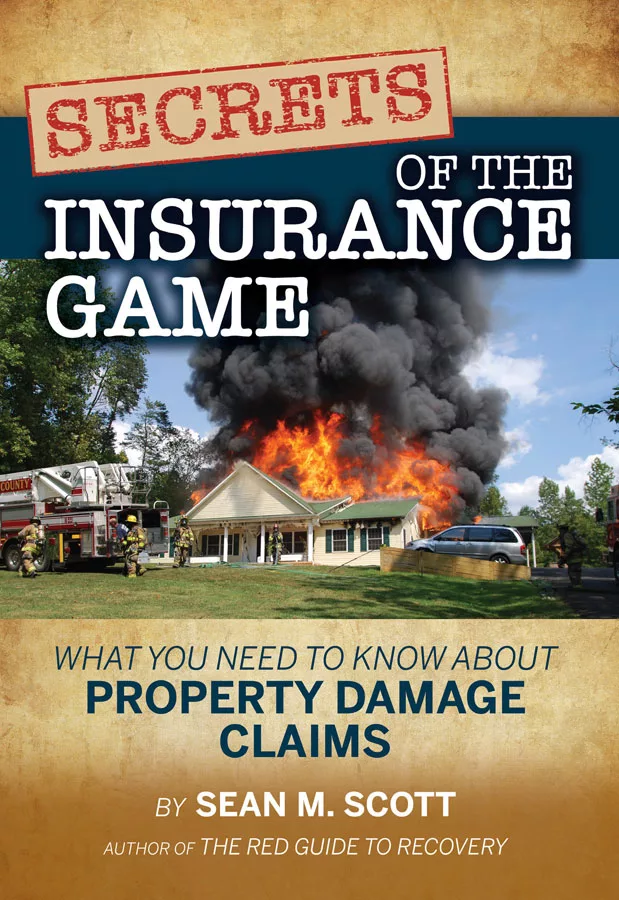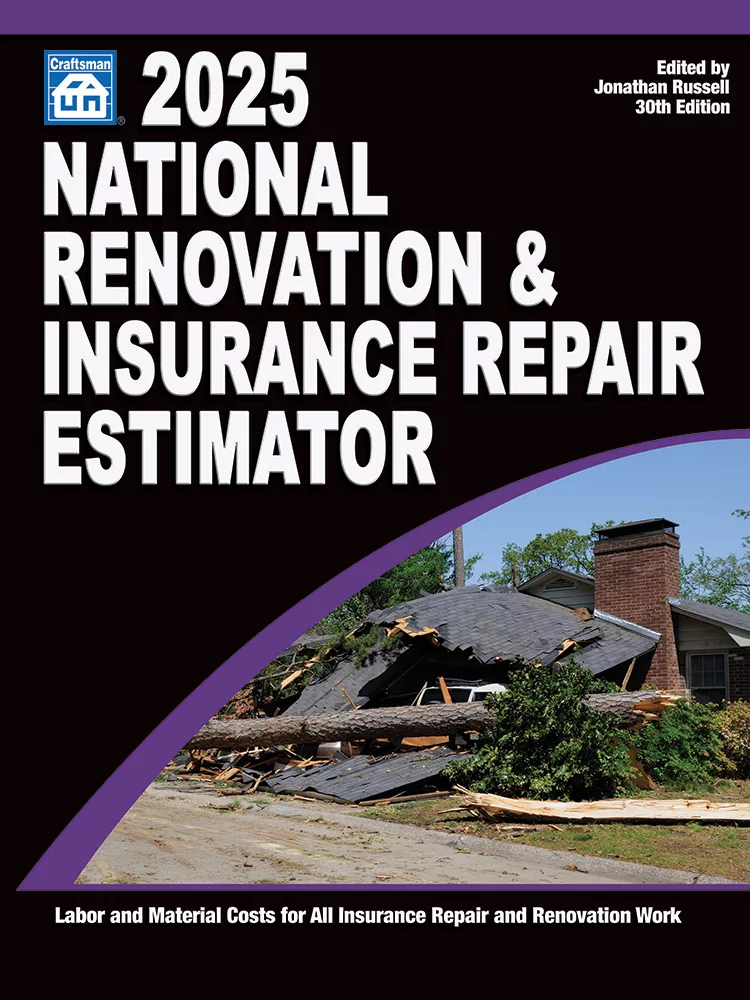Insurance Policies: Coverage and the Contractor
Almost every week I am asked by a fire and water restoration contractor if I could find them lower cost coverage than what they are currently paying. I routinely ask them to see their current policies so I can make approximate comparisons.

Almost every week I am asked by a fire and water restoration contractor if I could find them lower cost coverage than what they are currently paying. I routinely ask them to see their current policies so I can make approximate comparisons. Usually they say they just want to know what it would cost for a $1-million-per-occurrence policy with a $2 million aggregate, including general liability and contractor’s pollution liability with mold coverage.
I compare this to someone calling the contractor’s office and asking them to quote a price on restoring a fire-damaged, 5,000-square-foot structure. Clearly, they could not provide a quote without knowing all the details of the use, quality of construction desired, special features desired and so forth.
The details are equally important when purchasing an insurance policy. Insurance policies must be carefully designed to fit the needs of the individual contractor. Contractors should not replace their coverage based solely on price. Expert agents familiar with the contractor’s needs should be asked to review the current policy and find alternatives based on coverage issues as well as price. The contractor should expect the agent to point out the strengths (or deficiencies) in both current and proposed policies so that an appropriate decision can be made.
After reviewing hundreds of fire and water contractors’ insurance policies, some re-occurring problem areas should be brought to light. For example, there is the policy that did not cover bodily injury or property damage caused by bacteria. Each coverage part of the policy had an exclusion for microbiologicals, including bacteria. The policy has since reinstated limited coverage for fungi (mold) by special endorsement, but did not bring back coverage for bacteria, even when the contractor’s operations included remediation of flood- and sewage-damaged properties.
Then there were those endorsements that limited coverage to specified operations. Many times, subcontracted work was denied coverage under these endorsements. Many contractors whose policies were reviewed admitted to operations other than those specified and covered under their policies. Most of these policies would provide no coverage for operations such as asbestos abatement and lead abatement, even when subcontracted to qualified subcontractors. Operations shown on the application must also be shown on the quotation and the covered-operations endorsement, so that coverage cannot be denied for these claims.
 There are also exclusions for professional advice; plans; specifications; testing and errors or omissions. Almost half of all claims against restoration contractors have included some element of the contractor having not found all of the material for remediation or all the moisture to be dried, or having given poor advice leading to damage. Most of the policies reviewed had either complete exclusions for damage resulting from this type of alleged mistake, or very minor and limited givebacks of coverage.
There are also exclusions for professional advice; plans; specifications; testing and errors or omissions. Almost half of all claims against restoration contractors have included some element of the contractor having not found all of the material for remediation or all the moisture to be dried, or having given poor advice leading to damage. Most of the policies reviewed had either complete exclusions for damage resulting from this type of alleged mistake, or very minor and limited givebacks of coverage.
Most policies reviewed had some form of exclusion for fines, penalties, multiplied or exemplary damages. In a somewhat regulated industry, this could lead to great financial problems for a contractor against whom a jury finds for such damages.
Some policies reviewed had onerous “cross suits exclusions.” They would read something like, “any claim made by any insured against any other insured under this policy.” These were so broad as to eliminate coverage for claims made by an additional insured against an insured contractor. Since owners often ask to be an additional insured, this type of exclusion could eliminate coverage for any claim the owner would make against an insured contractor. This type of exclusion should be eliminated or narrowed to not apply additional insured claims against the insured.
Of grave concern, but of such complexity that it would require a large dissertation of its own, are contractual liability limitations. These are done by either “employee third party action-over” exclusions, or contractual liability definition limitations. Any reduction of coverage from what a standard “ISO” policy contains is highly undesirable.
Another common item frequently found that needs to be considered carefully is a “Contractor or Subcontractor Condition of Coverage” endorsement. These endorsements typically allow the insurance company to deny a claim resulting from a subcontractor’s work unless a series of conditions are fully met. While these conditions may be desirable as good business practices, to totally deny coverage through a “slip-up” may be a little draconian. Recommendations, rather than ironclad conditions, would be highly desirable.
When asked what was the most pressing reason for purchasing their coverage, most contractors mention mold. Nevertheless, most policies reviewed had limited mold coverage. Coverage was limited to the contractors “spreading, discharging or releasing” mold to where it would do harm. Clearly, mold does not need to be released, or alleged to have been released, to lead to a claim. Should a contractor insufficiently dry a structure, mold (and bacteria) could begin to grow and cause damage or injury due to spores entering from the outside or already present in the building materials. A policy that requires an allegation of spreading or discharge of the mold may well lead to a claim denial with the insured defending themselves.
What should a contractor do? First of all, read your current policies and look for the deficiencies described in this article. Then, ask your agent if your past or proposed policies have any of these deficiencies. If he or she cannot show you convincingly that they do not, ask them to get it in writing from the incumbent insurance company underwriter or the proposed companies underwriter. The least they can do is to clarify the coverage they are offering or excluding. If you are not comfortable with the response from your agent, seek out a second opinion from a specialist in insuring the industry. Finally, ask for a price at the limits you desire. The appropriate coverage is your best sleeping pill.

Almost every week I am asked by a fire and water restoration contractor if I could find them lower cost coverage than what they are currently paying. I routinely ask them to see their current policies so I can make approximate comparisons. Usually they say they just want to know what it would cost for a $1-million-per-occurrence policy with a $2 million aggregate, including general liability and contractor’s pollution liability with mold coverage.
I compare this to someone calling the contractor’s office and asking them to quote a price on restoring a fire-damaged, 5,000-square-foot structure. Clearly, they could not provide a quote without knowing all the details of the use, quality of construction desired, special features desired and so forth.
The details are equally important when purchasing an insurance policy. Insurance policies must be carefully designed to fit the needs of the individual contractor. Contractors should not replace their coverage based solely on price. Expert agents familiar with the contractor’s needs should be asked to review the current policy and find alternatives based on coverage issues as well as price. The contractor should expect the agent to point out the strengths (or deficiencies) in both current and proposed policies so that an appropriate decision can be made.
After reviewing hundreds of fire and water contractors’ insurance policies, some re-occurring problem areas should be brought to light. For example, there is the policy that did not cover bodily injury or property damage caused by bacteria. Each coverage part of the policy had an exclusion for microbiologicals, including bacteria. The policy has since reinstated limited coverage for fungi (mold) by special endorsement, but did not bring back coverage for bacteria, even when the contractor’s operations included remediation of flood- and sewage-damaged properties.
Then there were those endorsements that limited coverage to specified operations. Many times, subcontracted work was denied coverage under these endorsements. Many contractors whose policies were reviewed admitted to operations other than those specified and covered under their policies. Most of these policies would provide no coverage for operations such as asbestos abatement and lead abatement, even when subcontracted to qualified subcontractors. Operations shown on the application must also be shown on the quotation and the covered-operations endorsement, so that coverage cannot be denied for these claims.

Most policies reviewed had some form of exclusion for fines, penalties, multiplied or exemplary damages. In a somewhat regulated industry, this could lead to great financial problems for a contractor against whom a jury finds for such damages.
Some policies reviewed had onerous “cross suits exclusions.” They would read something like, “any claim made by any insured against any other insured under this policy.” These were so broad as to eliminate coverage for claims made by an additional insured against an insured contractor. Since owners often ask to be an additional insured, this type of exclusion could eliminate coverage for any claim the owner would make against an insured contractor. This type of exclusion should be eliminated or narrowed to not apply additional insured claims against the insured.
Of grave concern, but of such complexity that it would require a large dissertation of its own, are contractual liability limitations. These are done by either “employee third party action-over” exclusions, or contractual liability definition limitations. Any reduction of coverage from what a standard “ISO” policy contains is highly undesirable.
Another common item frequently found that needs to be considered carefully is a “Contractor or Subcontractor Condition of Coverage” endorsement. These endorsements typically allow the insurance company to deny a claim resulting from a subcontractor’s work unless a series of conditions are fully met. While these conditions may be desirable as good business practices, to totally deny coverage through a “slip-up” may be a little draconian. Recommendations, rather than ironclad conditions, would be highly desirable.
When asked what was the most pressing reason for purchasing their coverage, most contractors mention mold. Nevertheless, most policies reviewed had limited mold coverage. Coverage was limited to the contractors “spreading, discharging or releasing” mold to where it would do harm. Clearly, mold does not need to be released, or alleged to have been released, to lead to a claim. Should a contractor insufficiently dry a structure, mold (and bacteria) could begin to grow and cause damage or injury due to spores entering from the outside or already present in the building materials. A policy that requires an allegation of spreading or discharge of the mold may well lead to a claim denial with the insured defending themselves.
What should a contractor do? First of all, read your current policies and look for the deficiencies described in this article. Then, ask your agent if your past or proposed policies have any of these deficiencies. If he or she cannot show you convincingly that they do not, ask them to get it in writing from the incumbent insurance company underwriter or the proposed companies underwriter. The least they can do is to clarify the coverage they are offering or excluding. If you are not comfortable with the response from your agent, seek out a second opinion from a specialist in insuring the industry. Finally, ask for a price at the limits you desire. The appropriate coverage is your best sleeping pill.
Looking for a reprint of this article?
From high-res PDFs to custom plaques, order your copy today!







